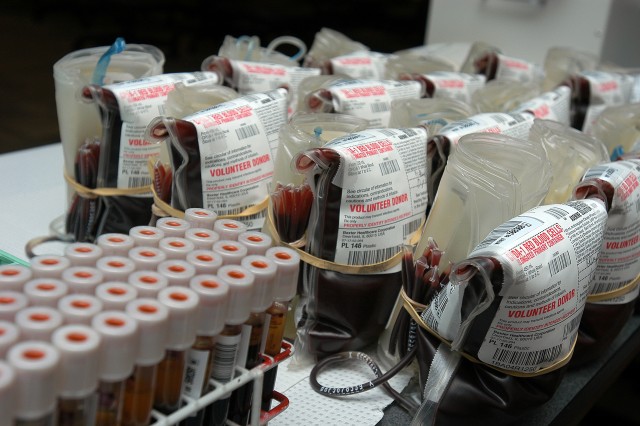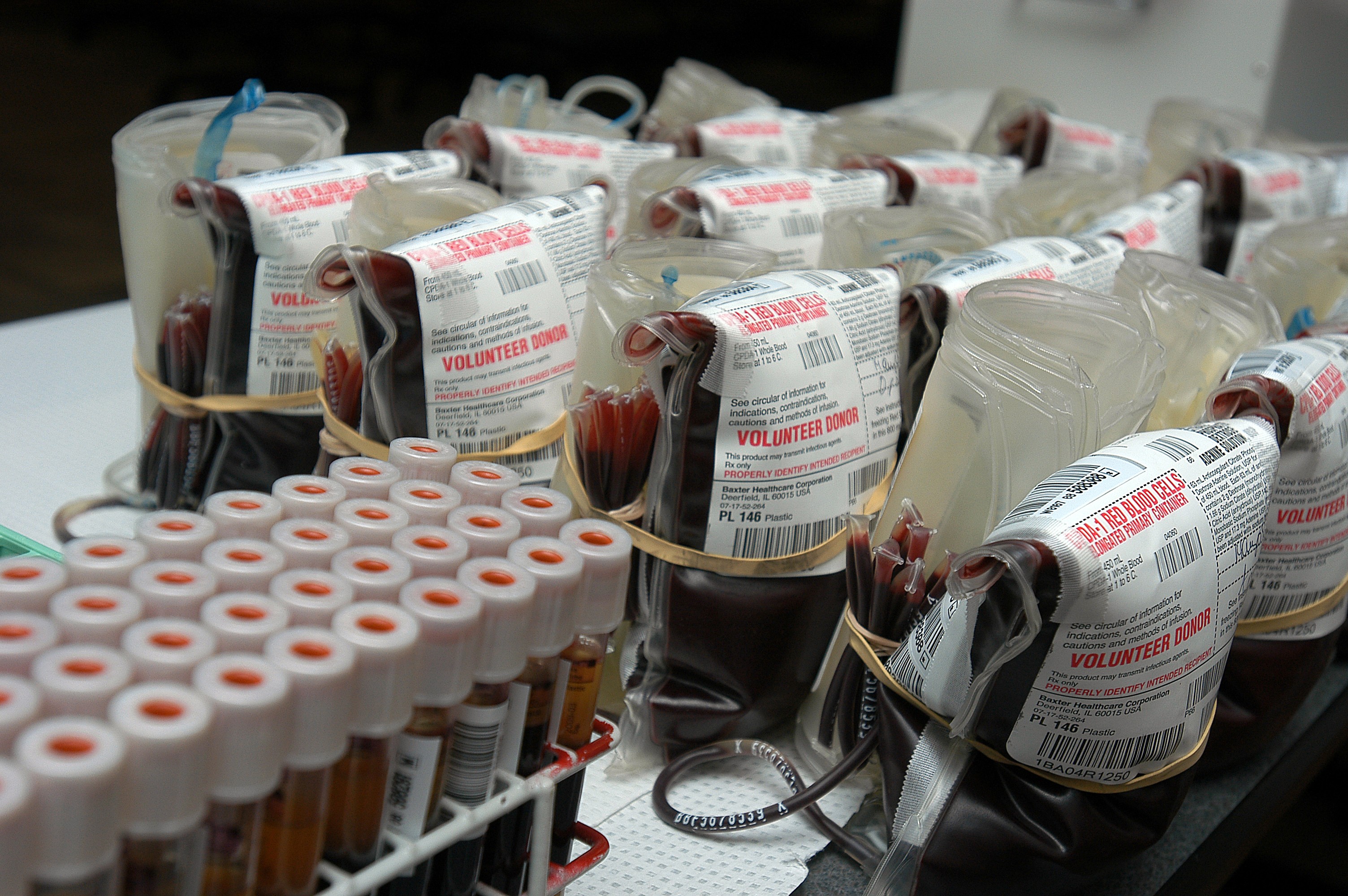WASHINGTON (Army News Service, Aug. 17, 2010) -- Blood plasma, the liquid component of blood, is being considered again in its dried form as an addition to Army medics' kit bags, Army officials said Tuesday.
Plasma, which is made up of water, proteins and clotting factors, was used during World War II as a battlefield treatment, but was discontinued in its dried form in the 1960s due to Hepatitis contamination. However, with hemorrhage being the most common cause of potentially survivable deaths on the battlefield, doctors have been looking to bring back dried plasma in order to stop bleeding in a deployed environment.
"We in combat casualty care research are very excited by the fact that on the horizon we have potential dried blood products in the pipeline, to potentially extend the ability to give clotting factors before reaching a deployed hospital," said Col. Lorne Blackborne, commander of the U.S. Army Institute for Surgical Research.
Currently, most Army medics are armed with fluids such as Hextend to administer to injured and dehydrated Soldiers, however such fluids dilute clotting factors making it more difficult for wounds to stop bleeding. Using rehydrated plasma, as done in the past, doesn't have the same negative effects.
"We are going back and doing that again in a safe way, where there won't be the risk to the troops. We will actually be able to improve their ability to clot or to be able to stop the bleeding," said Col. Dallas Hack, director of the combat casualty care research program.
Army doctors are also encouraging the interosseous catheter technique for administering intravenous fluids directly into bone marrow, which can be done in low-lighting or combat conditions, said Blackbourne. Dried plasma can be given this way.
Dried plasma is an ideal treatment for the battlefield because of its packaging - plasma becomes revived to its original form when mixed with water, and can be administered quickly. Studies show that giving patients plasma before they reach a hospital improves their possibility of survival, Hack explained.
Clinical trials are now being conducted, and Hack said Soldiers can expect to see dried plasma being used again within three to five years.
"We are working very, very hard to speed that up," Hack said.


Social Sharing